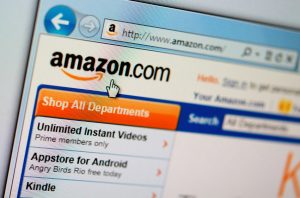 Amazon is not just leading the pack, they are leading others by a large margin and its’ recent second quarter numbers shows that Amazon is on a track by itself.
Amazon is not just leading the pack, they are leading others by a large margin and its’ recent second quarter numbers shows that Amazon is on a track by itself.
Internet Retailer recently reported that Amazon’s net sales in North America went up 28.1% in the second quarter over the same period last year, as well as internationally by 30.1%. Amazon also had a 58.2% increase in revenue from its Amazon Web Services cloud computing unit, resulted in overall revenue growth to 31%. This speaks volumes to how Amazon’s loyal customer base is utilizing Prime more frequently. More technology, reliability and convenience to order is allowing Amazon to be as trusted as a physical store. This is more than likely a prelude on how the remaining year is going to be for Amazon.
The article mentioned how the second quarter numbers were a record net income for Amazon, equating to $857 million, which is almost ten times the net income of only $92 million in the second quarter last year. This quarter makes the fifth consecutive profitable quarter that Amazon has had, which several retailers can’t attest to this type of profitability. In the past, Amazon often reported quarterly losses as it invested heavily in new fulfillment centers, developing new devices, licensing movies and TV shows for its Prime Video service. Now, the upfront investments are literally paying off for nation’s leading e-retailer.
Brian T. Olsavsky, Amazon’s senior vice president and chief financial officer discussed future implementations, as Amazon shows no signs of slowing down. “We’re opening 18 fulfillment centers this quarter,” Olsavsky said, according to a transcript via SeekingAlpha. “To put that in perspective, we launched six in Q3 of last year. This will bring us up to 21 net FCs for the year by the end of Q3 and that compares with 10 fulfillment centers for the first three quarters of last year on a net basis.”
In regards to Amazon’s continued rapid expansion, Olsavsky went on to say, “So, why are we expanding so much? If you remember back to Q4 and the capacity constraints we had in Q4, primarily due to really strong FBA growth, we talked a lot in the Q4 call about the operational cost of that in Q4. Customers well taken care of, but we had additional fulfillment costs from being so tight on capacity.” The more Amazon expands, the more it will be able to grow and sustain Same-Day Delivery to current and future markets.
Here are some more of the record stats from Amazon this second quarter:
- North American net sales of $17.674 billion, up 28.1% from $13.796 billion in the same period a year ago.
- International net sales of $9.844 billion, an increase of 30.1% from $7.565 billion last year.
- North America sales of books, music and other media of $2.928 billion, an increase of 11.8% over $2.620 billion in Q2 2015. North America sales of electronics and general merchandise increased 31.6% to $14.459 billion from $10.987 billion.
- Net income of $857 million, a sharp increase from $92 million a year earlier.
There is no doubt that retailers are going to have to do more than just have an existing, traditionally-operated online site. Some of the strategy Amazon has implemented are some of the same ones other retailers, brick-and-mortar and e-based, are doing also including same-day delivery. Google, Wal-Mart, Macy’s, Ace Hardware, Whole Foods, and more have all partnered with a Same-Day Courier like 1-800 Courier to create the omnichannels from online retail to the actual store via last-mile deliveries. The Seattle Courier has a national footprint for same-day delivery, enabling it to have the versatility big companies need for quick service implementation.
Reference: 7.28.16, www.internetretailer.com, Don Davis, Amazon reports 28% North American sales growth in Q2



